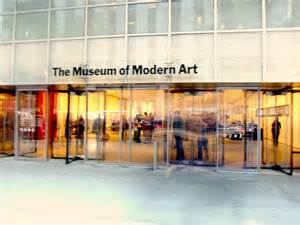Oct 31 2017 - Apr 1 2018
New York City, NY
A major exhibition examining the scene-changing, interdisciplinary life of downtown New York’s seminal alternative space.
The East Village of the 1970s and 1980s continues to thrive in the public’s imagination around the world. During the pioneering years of the neighborhood’s evolution as a center of social life and creativity, Club 57 was a core institution. This exhibition will explore that legacy in full for the first time. The exhibition will be accompanied by a fully illustrated catalogue.
Located in the basement of a Polish Church at 57 St. Marks Place, Club 57 (1978–83) began as a no-budget venue for music and film exhibitions, and quickly took pride of place in a constellation of countercultural venues in downtown New York fueled by low rents, the Reagan presidency, and the desire to experiment with new modes of art, performance, fashion, music, and exhibition. A center of creative activity in the East Village, Club 57 is said to have influenced virtually every club that came in its wake.
“Back in 1980 there was a divide in attitude between the groovy psychedelic Club 57 kids and the cool opioid Mudd Club kids. At the time it seemed fierce,” says artist Kenny Scharf. “The Club 57 kids, mostly art school misfits with no connection to the uptown art world, entertained each other with extremely uninhibited self-expressions…always with an underlying current of satire and even doom. Very inspired by ‘happenings’ of the '60s, it spread to…the entire club scene, including Mudd Club, Danceteria, Pyramid, and, eventually, P.S.1 [now MoMA PS1].”
In this way Club 57 became an early player in the shift of New York’s social life from Soho to the East Village. Its practice of collaborative, themed exhibitions aligned the space with art collectives and initiatives such as the pioneering Times Square Show (1980), and anticipated the proliferation of East Village galleries beginning with the Fun Gallery and Gracie Mansion.
The exhibition will tap into the legacy of Club 57’s founding curatorial staff—film programmers Susan Hannaford and Tom Scully, exhibition organizer Keith Haring, and performance curator Ann Magnuson—to examine how the convergence of film, video, performance, art, and curatorship in the club environment of New York in the 1970s and 1980s became a model for a new spirit of interdisciplinary endeavor. Responding to the broad range of programming at Club 57, the exhibition will present their accomplishments across a range of disciplines—from film, video, performance, and theater to photography, painting, drawing, printmaking, collage, zines, fashion design, and curating. Building on extensive research and oral history, the exhibition features many works that have not been exhibited publicly since the 1980s.
Central to the Museum’s site-specific evocation of the basement club will be an in-gallery projection space screening Club 57–related film and video. The organization of the exhibition is closely linked to the acquisition of more than 100 original film and video titles to date, by more than 20 artists, ranging from performance documentation to music videos, moving-image projects by Club 57–connected artists, and student films. MoMA is working with the artists to preserve a range of materials in Super 8mm, 16mm, and analog video formats, and the exhibition will include the premieres of a host of digital restorations.

Whether you go or not, the exhibition catalog, Club 57: Film, Performance, and Art in the East Village 1978-1983, may be of interest.
Exhibition Venues & Dates
Oct 31 2017 - Apr 1 2018
New York City, NY
